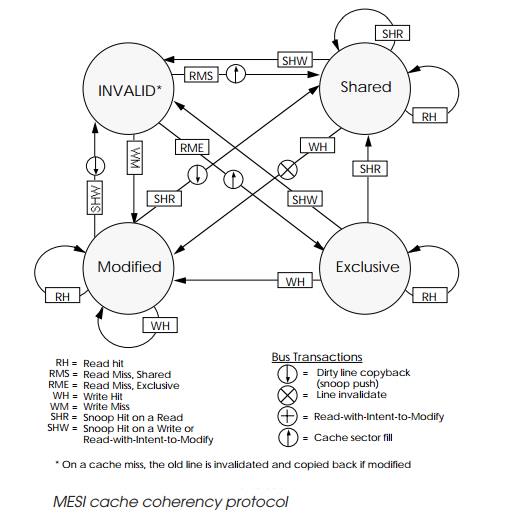Chapter: Embedded Systems Design : Memory systems
The MESI protocol
The MESI protocol
The MESI protocol is a formal mechanism for controlling cache coherency
using snooping techniques. Its acronym stands for modified, exclusive, shared,
invalid and refers to the states that cached data can take. Transition between
the states is controlled by memory accesses and bus snooping activity. This
information appears on special signal pins during bus transactions.
The MESI diagram is generic and shows the general opera-tion of the
protocol. There are four states that describe the cache contents and its
coherence with system memory:
Invalid The
target address is not cached.
Shared The target
address is in the cache and also in at
least one other. It is coherent with system memory.
Exclusive The target
address is in the cache but the data is coherent with system memory.
Modified The target
address is in the cache, but the contents has been modified and is not coherent
with system memory. No other cache in the system has this data.

The movement from one state is governed by memory actions, cache hits
and misses and snooping activity. For example, if a processor needs to write
data to a memory address that has a write-back policy and cache coherency
enabled as part of its page descriptors — controlled by the WIM bits — and
causes a cache miss, the processor will move from an invalid state to a
modified state by performing a ‘read with intent to modify’ bus cycle.
The MESI protocol is widely used in multiprocessor de-signs, for
example, in the Futurebus+ interconnection bus. The MPC601 uses this protocol.
Related Topics